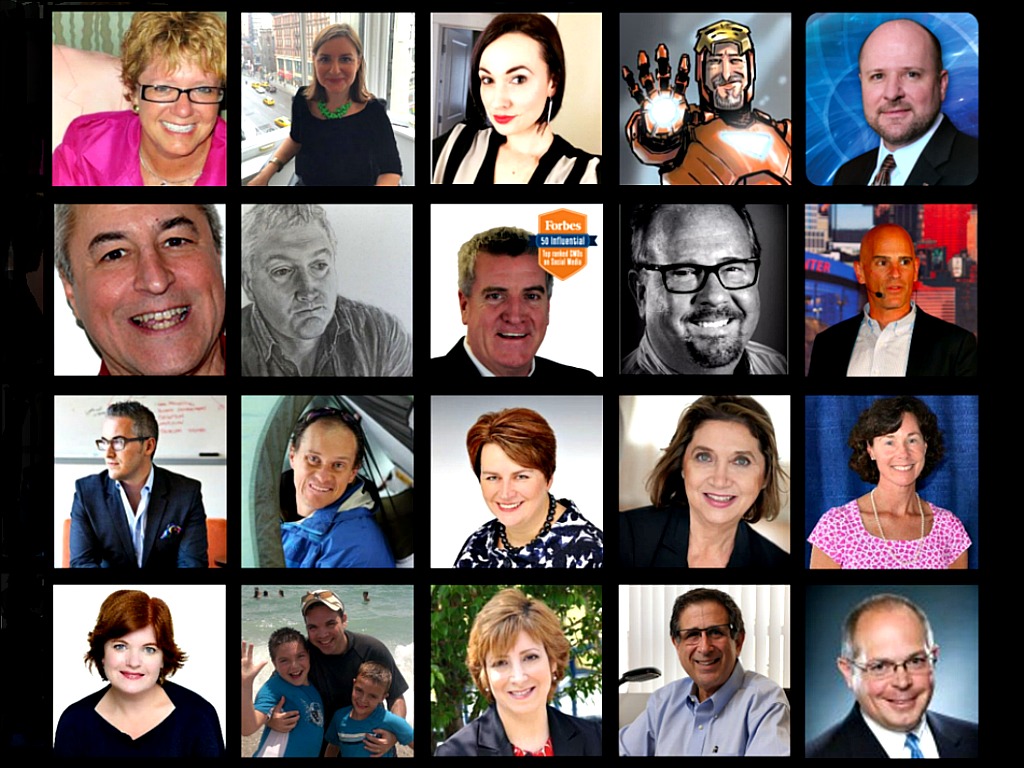
January 21, 2016: Last year, Didit analyzed the Tweeting behavior of the Top 100 CMOs on Twitter, as identified by Social Media Magazine. We wanted to understand how CMOs — who by virtue of their profession represent a seasoned, knowledgeable group with respect to social media best practices — use Twitter, particularly in respect to how often they Tweet, a metric we termed “Tweet Velocity.” In early January, 2016, we resampled the data.
Discussion
Of the original 100 CMOs on Twitter identified by Social Media Marketing Magazine, all remain on the platform, although 29 did not Tweet at all during our sample 1-week period, a significantly higher number of non-Tweeters than the 14 we saw last year.
While weekly total Tweet volume for the CMO group was slightly higher in May than it was when Didit resampled Tweet volume in January 2016 (1360 vs. 1136 Tweets, a 17 percent decline), this data is insufficient to support the conclusion that CMOs as a class are any less disposed to using Twitter as a messaging platform for personal branding and/or to advance the companies for which they serve.
CMO Tweet Velocity Distribution
CMO Tweet Velocity distribution followed a classic long tail curve in 2015, and this same pattern holds in 2016. The average Tweet rate for this group — 11.35 in January 2016 — moved upward slightly to 11.6 Tweets per week. The Median for the group was 4.5 Tweets per week, a metric indicating that high-velocity-Tweet CMOs significantly skewed the averages upward.
CMO Accelerators and Decelerators
Most of the top fastest Tweeting CMOs of 2014 stayed in the top 20, including Lynne Johnson, of Consumers Credit Union, whose searing 132 Tweet/week pace kept her in the #1 spot. Amber Osborne, of Meshfire, with 86 weekly Tweets, moved from #3 to #2; Alan See, of CMO Temps, with 65, advanced from #5 to #3 in Tweet Velocity Rank.
Some CMOs produced noticeably fewer Tweets in our recent sample period than they did in May. For example, Siegel+Gale’s Margaret Malloy‘s weekly Tweet output declined from 119 to 47; Mi6’s Chris Herbert from 71 to 29, and Simulmedia’s David Cooperstein from 37 to 12. Given the relatively short time window of our survey methodology, it cannot be known whether these velocity drops are temporary anomalies or reflective of a turn away from Twitter in favor of participation on other social platforms. It is also possible that during Didit’s sample period, these executives happened to be occupied by other marketing issues that distracted them from Twitter participation.
Conclusion
CMOs on Twitter continue to embrace the service as a rapid-fire messaging platform. Our data suggests that those CMOs responsible for the highest Tweet volume can be expected to continue to serve out very large volumes of Twitter messages to their followers and fans this year. Conversely, those who, in our last sample remained largely silent or produced a very low output of Tweets can be expected to maintain this same low output this year. While overall Tweet volume was down for this entire group by a statistically significant 17 percent, this in itself does not indicate that Twitter is less of a favored platform among these executives than it was last year, given the number of unknowable exogenous variables that can interfere with smooth year-to-year output patterns.
